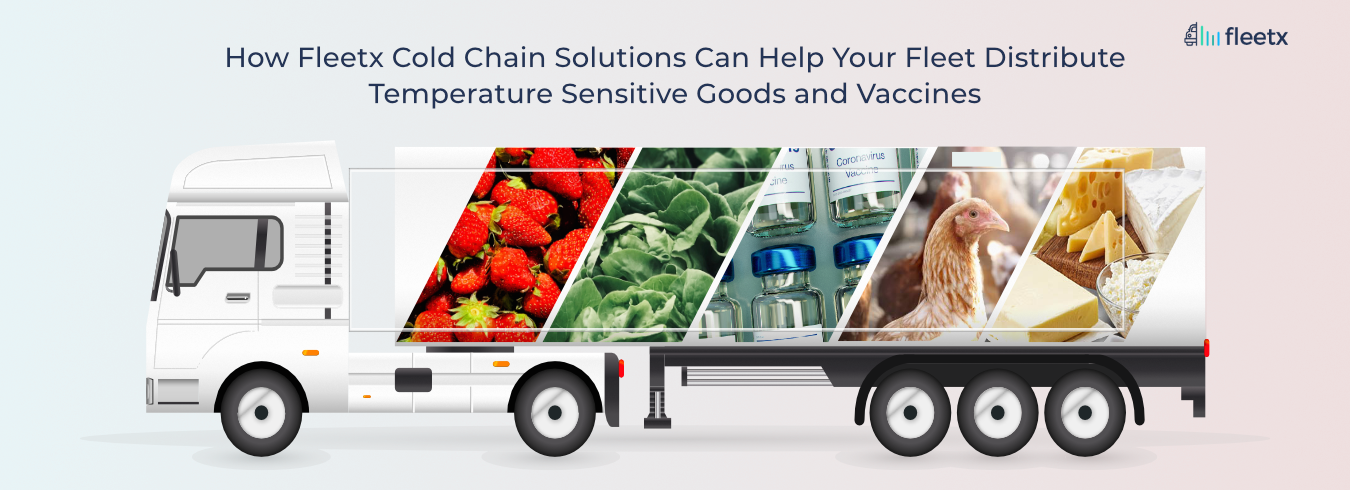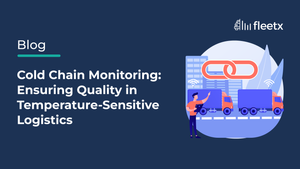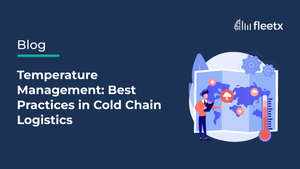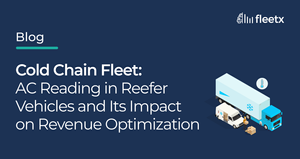
What is Cold Chain Fleet Management?
In the supply chain, certain goods are temperature-sensitive. The transportation of these goods through thermal and refrigerated packing methods and logistical planning is called the Cold Chain Fleet Management.
What is it used for?
Globalization may have made the world a smaller place but the vast geographical distances are a reality that we need to combat. Transportation of commodities over vast distances can be a complex process with a lot of risk of damage to the cargo.
Some commodities which are fragile and prone to breaking are at a risk of damage by shocks, while some commodities, like perishable goods, can be damaged by temperature changes.
When speaking of temperature-sensitive goods, we mostly talk of perishables like food or pharmaceutical or biological products which need strict temperature regulation.
Why do we need cold chain solutions?
Before the 1950s, the entire supply chain, including the cold chain was directly handled by the manufacturer or the distributor. The onset of government intervention and regulation of products led to stricter laws. This led to manufacturers resorting to third party logistic (3PL) experts for the transportation of their goods and thus the emergence of the logistics industry as we know it.
Cold chain logistics is not just logistical planning, but also involves science, technology and multiple operational processes.
The two main types of commodities that require cold chain are
- Perishables like food
Food being sensitive to any and all changes is a major public health concern. Depending on the quantity and the required conditions, cold chain can be customized in modal choice, packaging and other logistical planning required.
- Pharmaceutical goods
Cold chain has gained major importance in the pharmaceutical industry. A lot of work in the pharmaceutical industry involves clinical research, trials, testing, production, movement of these drugs and distribution. A major part of the pharma industry is clinical research and trials, which cost up to millions of dollars and have a high failure rate. A lot of the drugs used in the process are temperature sensitive and open to risk. In case of any unforeseen unfortunate instances like accidents or temperature variations, these drugs can prove to be ineffective or worse, harmful to humans or the environment.
Are there different methods of cold chain packaging?
In the recent decades, cold chain processes have improved a lot and can now cater to a wider range of goods. Different products have different requirements. To facilitate this, the logistics industry has broadly categorized the different temperature standards. The most common are –
- ‘Banana’ at 13 °C (Eg. Most raw food items)
- ‘Chill’ at 2 °C (Eg. IIVs or Inactivated Influenza Vaccines are stored at 2°C to 8°C)
- ‘Frozen’ at -18 °C (Eg. MMR vaccine for measles and mumps is stored at -50°C to +8°C)
- ‘Deep-frozen’ at -29 °C (Varicella or the chickenpox vaccine is stored at -50°C to -15°C)
To ensure that a shipment remains within the temperature range for an extended period of time is basically dependent on the type of container used and the method of refrigeration. About 20% of cold chain logistics relies on cargo refrigeration. There are multiple factors involved in deciding the type of packaging required and the level of energy consumed. Some such factors are –
- Transit Duration
- Size of the shipment
- Outside temperatures
The cold chain technologies majorly involved in providing a temperature controlled environment for transport are –
- Dry ice
Or solid Carbon Dioxide is measured at -80°C and is used mostly for the shipping of pharmaceutical goods, dangerous goods and food. Dry ice does not melt but rather sublimate when it comes in contact with air.
- Gel packs
Most of the pharmaceutical and medicinal goods are classified as ‘chilled products’ and must be stored between 2 and 8°C. Gel packs contain phase changing substances that go from solid to liquid and vice versa to maintain the temperature.
- Eutectic plates or ‘cold plates’
Just like gel packs, these are filled with a liquid that maintains the required temperature and are better used in delivery vehicles for shorter time periods.
- Liquid Nitrogen
Measured at -196°C, this is mostly used for the transportation of biological cargo like tissue and organs.
- Quilts
These are insulated pieces that are placed over and around the cargo to maintain the temperature of the entire cargo.
- Reefers
Generic term used to describe any temperature controlled vehicle like a van, a small truck or a standard ISO container. Reefers have an attached and independent refrigerator and thus can be used to keep cargo cold or even warm, depending on the requirement.
What is Fleetx and how can it help in the distribution of Covid vaccines?
The global pandemic Covid-19 continues to claim lives. Major pharmaceutical companies have dedicated all their resources to finding a vaccine. Some such vaccines have reached the trial phase already, which only means we are closer to finding a solution.
With the current world population at 7.8 billion, we can only imagine the logistical nightmare that will stir up with the onset of vaccines. Vaccines will be rendered useless if the correct distribution channels and methods are not in place. The demand for cold chain fleet solutions will be at an all-time high and upcoming logistic support companies like Fleetx are the only ones that can help fight the good fight.
Fleetx’s AI-driven software not only handles general shipments for our clients and their fleets, but also caters to a niche product category of temperature sensitive goods like food and pharmaceutical commodities, making them our most reliable logistic partners when it comes to Covid vaccines and their distribution.
Backed by a software that automatically monitors temperatures and gives real-time updates on the shipments, Fleetx’s temperature sensors in their clients’ refrigerated fleet ensure that the shipment will be safe and free of any contamination. Additionally, vendors also have access to detailed reports on the shipment, which include minute-by-minute breakdowns of temperature and sensor data. Such reports will help in reducing any risk of delay or destruction of the Covid vaccines when the time comes.
Fleetx is ready to do its bit when the time comes to distribute the Covid vaccines. All we can do now is support pharmaceutical companies in finding a vaccine and hope that this global pandemic finally comes to an end.






